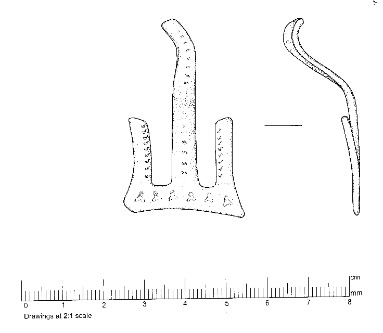Cash Flow Statement: Explanation, Example, How to Read
Content
A cash flow statement is one of the three major financial statements that showcases the health of a business. First, by summing each of the previous categories, you’ll be able to determine a net increase or decrease in cash for the period you’ve been looking at. The next line combines the starting amount of cash with the net change in cash, resulting in your ending amount of cash for that period in time.

Internal choices like budgeting and hiring (or firing) personnel may be influenced by cash flow. The cash flow statement summarizes the cash spent or generated by the business as a result of its operating, investing, and financing operations. If each coconut cost him Rs 40, he would have earned a profit of Rs 5,000.
Russell 2000 Futures
When it comes to making decisions, the size and sign of these numbers is less important than understanding the story that they convey. If a company has high positive cash flow from financing, it likely means it is taking on debt for further business operations. Insights from this section enable you and potential investors to take stock of your company’s financial health, as well as determine whether your current funding model is sustainable. Using SampleCo as an example, we can see that the company spent $1,500 on computers and equipment — and paid out the cash for it — during the reporting period covered by the cash flow statement. Once all of the adjustments to net income are taken into account, everything is tallied up to show the net cash provided by operating activities. For SampleCo, $27,200 in the company’s bank account comes from operations.
- Along with balance sheets and income statements, it’s one of the three most important financial statements for managing your small business accounting and making sure you have enough cash to keep operating.
- Let’s take a closer look at what you’ll find on a cash flow statement and how to read one.
- Cash flow is the net amount of cash, and its equivalents, flowing into and going out of a company.
- Operating activities are the things a business does to stay in business or its purpose for existing.
- Direct cash flow involves simply adding all of a businesses’ cash transactions in the operating activities section of the cash flow statement.
The operating activities of a business will depend on the nature of the business. For example, the operating activities of a watch company will be the manufacturing, marketing, and selling of watches. The purchase and sale of land will be considered as an operating activity for a real estate company. How To Read A Statement Of Cash Flows ‘Cash Equivalents’ is a term applied to highly liquid investments as well as marketable securities that can be converted into known amounts of cash. Therefore, the cash flow statement considers both cash and cash equivalents alike and explains the changes in the total cash and the cash equivalents.
Automation can help with cash flow—and cash flow statements
A cash flow statement doesn’t necessarily cover all business incomes and expenses (since some exchanges come from credit), but still tells a valuable story about your business. The final category on the balance sheet shows all cash transactions that had to do with financing activities. Things that would go in this https://kelleysbookkeeping.com/ category include activities that have to do with debt, equity, or dividends. In our example above, the company paid $38,000 and $52,000 to loan repayments and dividends, respectively. The organization didn’t bring in any money through financing activities, so the net cash flow from financing is negative $90,000.
Therefore, if a company paid its employees upfront for the year, for whatever reason, this cash payment would be included in the first quarter cash flow statement, but would be spread throughout the year on the income statement. The cash flow statement serves a crucial role in providing comprehensive financial information about a company’s liquidity and cash management. It goes beyond the traditional income statement and balance sheet by focusing specifically on the movement of cash within a given period, typically a fiscal year. The primary purpose of a cash flow statement is to shed light on how a company generates and uses its cash resources, providing valuable insights into its financial health and operational efficiency. In the world of finance and accounting, gaining a deep understanding of a company’s financial health is essential.
Company A – Statement of Cash Flows (Alternative Version)
We begin with reasons why the statement of cash flows (SCF, cash flow statement) is a required financial statement. Note that cash flow is not the same as profit as profit is what you have left over after you’ve paid all your expenses. The difference comes down to whether or not your customers pay you, and whether or not you pay your vendors. For most, these are the only two factors that create a difference between profit and net cash flow.
- For Propensity Company, beginning with net income of $4,340, and reflecting adjustments of $9,500, delivers a net cash flow from operating activities of $13,840.
- Use a cash flow statement, along with an income statement and balance sheet, to better understand the financial health of your business.
- It demonstrates an organization’s ability to operate in the short and long term, based on how much cash is flowing into and out of the business.
And instead of tapping shareholders for more money, it gave money back to them, paying a whopping $10.6 billion dividend and repurchasing $22.9 billion of stock. Cash flow statements are important, because they’re a way to measure a company’s financial health. Cash flows from financing activities explains the cash flows used to fund the company’s operations and payback its shareholders. In short, companies are funded through both debt and equity financing, and companies pay back shareholders through issuing dividends and by performing share buybacks. As you can see, NVIDIA’s cash flows from investing activities is -$19.675 billion. Although this may appear concerning, if the cash flows from investing activities number is negative, this simply means the company is investing to grow the business.
In addition, it can be a great indicator to the long-term viability of your business, especially when you look at the specific sources and uses of cash. You may have great revenue, but if you generate all your revenue from a handful of customers who are late to pay – or don’t even end up paying – then you may as well not generate the revenue in the first place. On the income statement, the purchase appears as a $3,000 increase in net earnings. It also appears on the September 30 balance sheet as $3,000 in accounts receivable. This means that your business has earned the revenue but did not collect it during the reporting period. On the other hand, negative cash flows mean there’s an imbalance between what a company spends and what it takes in.

